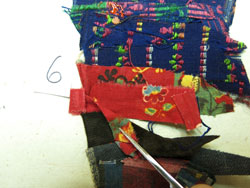Servants, cotton and clothing
Servants, cotton and clothing in Denmark-Norway in the eigteenth century – a history of consumption
The Centre for Textile Research, Saxo institute invite all to attend a public lecture.
With the small research project "Servants, cotton and clothing in Denmark-Norway in the eigteenth century", historians Hanne Østhus and Vibe Martens discuss and examine the dress and garments worn by servants in Copenhagen and Oslo at the end of the eighteenth century, and focus in particular on their consumption of the new, global fibre: cotton. Through the assessment of change over time it is possible to discuss if and when a consumer society was initiated as well as how new patterns of consumption in dress spread both geographically and socially. Servants made up more than 10 percent of the population at the onset of the nineteenth century, and they therefore represented a very important group of consumers.

Cotton came to be a central commodity in the global trade that arose from the sixteenth century and into the early industrialisation of the eighteenth century. The new, global textile that cotton was central in the developments in the manufacturing industries in most parts of the world and also form the basis for new questions proposed and answered by historians today.
The lecture is open to all.
